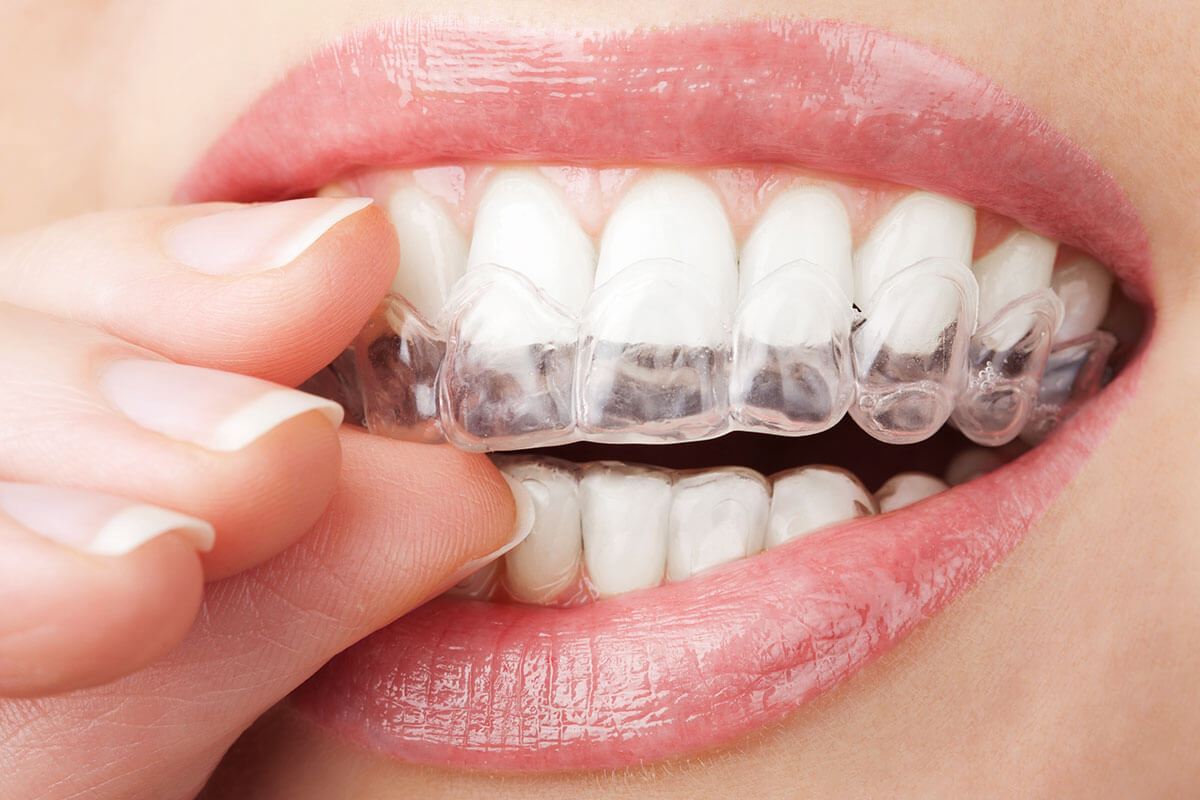Discover the Conveniences of Invisalign for a Perfect Smile Change
Discover the Conveniences of Invisalign for a Perfect Smile Change
Blog Article
Invisalign vs. Traditional Braces: Which Alternative Is Right for You?
When taking into consideration orthodontic therapy, the option between Invisalign and standard braces provides a number of essential elements that warrant mindful examination. Invisalign uses a discreet choice with removable aligners, while traditional braces give a more noticeable yet reliable service for severe imbalance.
Review of Treatment Options

On the other hand, standard braces include metal braces and cords that are adhered to the teeth. This approach uses continual pressure gradually to achieve positioning. While reliable for intricate orthodontic problems, conventional braces need normal visits for modifications and can position challenges in keeping oral hygiene because of the difficulty of cleansing around braces and cords.
Both choices have their qualities, and the choice often rests on certain oral problems, way of living preferences, and person conformity. Ultimately, consulting an orthodontic expert is vital for identifying one of the most appropriate therapy strategy tailored to private demands. Comprehending the nuances of each choice can substantially affect the overall success of orthodontic treatment.
Aesthetic Factors To Consider
A considerable variable influencing the selection in between Invisalign and conventional dental braces is the visual charm each therapy provides. Invisalign aligners are crafted from clear plastic, making them virtually undetectable when worn.
In comparison, conventional dental braces contain metal braces and cables, which can be more recognizable. While developments in orthodontic innovation have actually led to the growth of smaller braces and colored elastics, conventional braces still keep an even more conspicuous profile. For some people, the exposure of braces might hinder them from looking for essential treatment.
Eventually, the choice in between Invisalign and conventional braces might rest on personal choices pertaining to visual appeals. Patients who prioritize discernment typically lean toward Invisalign, while those who are less worried about exposure may choose for standard braces. Recognizing the visual ramifications of each choice is important for making an informed decision that lines up with one's lifestyle and preferences.
Comfort and Convenience

In terms of ease, Invisalign aligners are detachable, enabling individuals to enjoy their favorite foods without limitation and keep ideal dental health. Brushing and flossing are simplified, as the aligners can be obtained during these routines, whereas typical dental braces need cautious maneuvering around cables and braces.
In contrast, standard braces necessitate routine changes, making them much less convenient for those with hectic schedules. On the whole, the comfort and comfort of Invisalign make it an enticing choice for lots of people seeking orthodontic treatment.
Therapy Period and Effectiveness
While both Invisalign and conventional dental braces work in remedying oral imbalances, the duration of treatment can differ considerably between both options. Normally, Invisalign therapy can take anywhere from 12 to 18 months, depending on the complexity of the instance. The clear aligners work by gradually moving teeth right into their wanted positions, and regular follow-ups with an orthodontist assistance ensure development continues to be on course.
On the other Full Report hand, standard dental braces typically call for a longer commitment, usually varying from 18 months to 3 years. This is due to their fixed nature and the use of brackets and cords, which can be much more reliable for complex cases and serious imbalances (Invisalign). The treatment efficiency of traditional braces is well-documented, as they allow for accurate modifications and better control over tooth movement
Ultimately, the option in between Invisalign and typical dental braces might pivot on both the awaited therapy period and the details oral concerns handy. Consulting with an orthodontist is crucial, as they can supply customized recommendations based here are the findings on private requirements, ensuring the chosen method lines up with preferred results and durations.
Price Contrast and Insurance Policy Choices
Cost plays a substantial function in the decision-making procedure for people taking into consideration orthodontic treatment, whether choosing Invisalign or typical braces. Usually, the expense of Invisalign ranges from $3,000 to $8,000, while typical braces usually cost in between $2,000 and $6,000. Elements influencing these prices include the intricacy of the instance, the duration of therapy, and geographical location.
Several dental insurance policy plans give partial coverage for orthodontic therapies, but the specifics can differ commonly. Generally, standard dental braces might be a lot more regularly covered by insurance policy strategies compared to Invisalign, which some insurers categorize as an aesthetic procedure.
In addition, several orthodontic methods offer adaptable layaway plan, making both treatment options more accessible. Clients should make inquiries regarding possible financing options and discount rates for ahead of time repayments. Evaluating the overall price, including insurance coverage advantages and layaway plan, is important for making an educated choice that straightens with both aesthetic choices and spending plan considerations.

Conclusion
In recap, the selection between Invisalign and conventional braces depends upon several variables, including aesthetic choices, comfort, therapy period, and expense. Invisalign uses a discreet, removable option that helps with oral health and nutritional versatility, while conventional braces might be preferable for intricate oral issues and commonly come at a lower rate point. Ultimately, consultation with an orthodontist is crucial to analyze private situations and determine one of the most suitable treatment alternative for achieving optimum oral placement.
When thinking about orthodontic treatment, the selection between Invisalign and typical braces offers a number of important variables that merit mindful assessment.Contrasting Invisalign and conventional dental braces exposes distinctive treatment alternatives for orthodontic adjustment.While both Invisalign and traditional braces are reliable in dealing with dental imbalances, the duration of therapy can differ significantly in between the 2 options.Expense plays a considerable duty in the decision-making procedure for individuals taking best site into consideration orthodontic therapy, whether opting for Invisalign or traditional braces.In summary, the choice between Invisalign and traditional dental braces hinges on several aspects, consisting of aesthetic preferences, convenience, therapy duration, and price.
Report this page